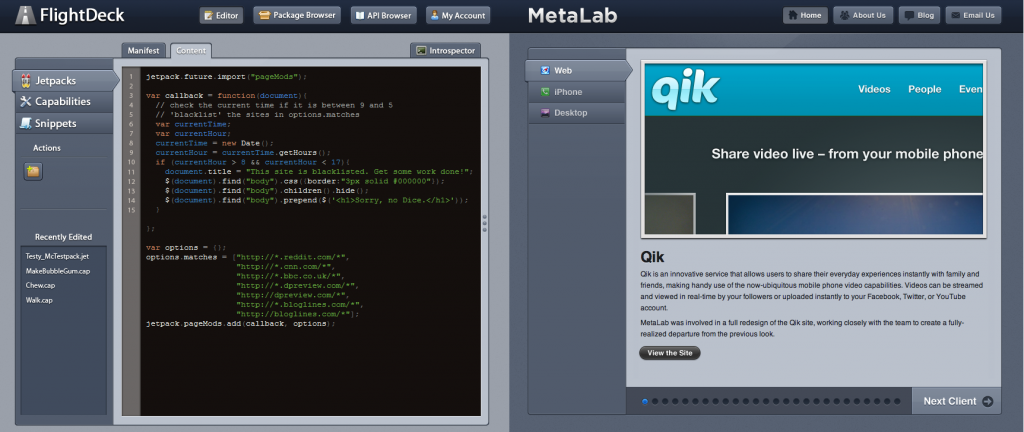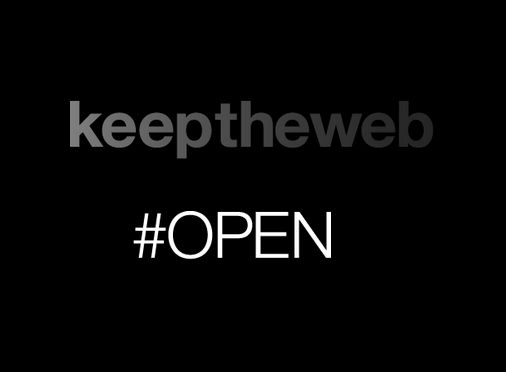Mozilla has been accused by a Canadian interface design firm MetaLab for stealing user interface elements in the browser maker’s Jetpack project. MetaLab, a Victoria, British Columbia based firm charged Mozilla in a blog of Andrew Wilkinson, one of the founder member of the company on Tuesday. Mozilla used the tool to simplify add-on making. Mozilla apologized to MetaLab on Wednesday in a blog post.
“What they did was pretty ridiculous,” Wilkinson said in an interview yesterday. “There’s a difference between inspiration versus ripping something off,” he said. “The measurements of the graphic elements [Mozilla took from us] were the exact same, the very same pixels. When someone takes your images from the server hosting them, that’s crossing the line.”
In the blog he said:
We get ripped off a lot. I often spot a button image that’s been repurposed, or a layout that’s just a little bit too inspired by a previous design we’ve done. Generally, we find it really flattering and have a good laugh – if nothing else, it makes us feel that we’re probably doing something right if people are so eager to plagiarize. But earlier today a friend linked me to Mozilla’s new JetPack design and my jaw dropped.
The design goes well beyond imitation – they literally copied images straight off of our site. Maybe they thought we were open source, too?
I don’t understand why companies think that they can get away with doing this. The internet is a surprisingly small place, and we were notified almost immediately. We’ve all had a good chuckle about this, but we’ve contacted Mozilla and demanded that they take the design down. I’d expect better from a respectable company like Mozilla. It’s one thing when a student or fledgling company does something like this, but Mozilla is a big company with the resources to create original design.
Mozilla apologized to MetaLab on Wednesday, saying in a blog post:
MetaLab recently blogged that Mozilla had used their design work without permission or attribution.
At issue are early mockups for one of the Jetpack developer tools that included design elements from the MetaLab web site. While the design direction being implemented does not utilize these design elements, we inadvertently included the early mockups in our blog post and video announcing the next phase of development for the Jetpack SDK.
We’ve since removed all of the early mockups from our web sites, and updated the videos and screenshots with the correct content.
We sincerely apologize to MetaLab for incorporating design elements from their web site in our early mockups and for posting them publicly without proper attribution.
We’re actively investigating how this happened to ensure that it does not happen again.
Wilkinson was referring to a proposal MetaLab submitted last November to Mozilla for crafting the FlightDeck user interface. “Mark [Nichols of MetaLab] spent an hour on the phone with Daniel Buchner and Aza Raskin [of Mozilla], going through our proposal in detail,” said Wilkinson in his blog post Tuesday. Buchner told MetaLab Dec. 27 that Mozilla had decided not to hire the firm for the project.
What rubbed MetaLab the wrong way, said Wilkinson, was the thought that Mozilla had been put off by the fee the firm had wanted for the work, but then grabbed FlightDeck’s design elements from MetaLab’s site anyway. “The guy who’s the project lead for Jetpack was so involved in that proposal,” said Wilkinson, talking about Buchner, who is the Mozilla project manager for Jetpack.
“The Mozilla situation was the perfect storm. They know who we are, they are a massive company, and we had even bid on the project. It was too much,” added Wilkinson in a follow-up blog post late Wednesday.
Even so, “there are no hard feelings,” Wilkinson said today. He credited Mozilla CEO John Lilly with acknowledging the problem within hours via Twitter, and said he had spoken with the Mozilla team on the phone. “They were very apologetic,” he said.
“Imagine if Microsoft had previewed the SDK for their Windows phone platform and all the marketing materials, press releases, and video demos showed elements of Apple’s iPhone UI,” said Wilkinson in the Wednesday blog. “Of course, there’s a reason for everything: ‘The iPhone UI was only used during development to help us scope out the feature set’ [or] ‘It was one of our interns, we had no idea’ [or] ‘It was never going to be released.’ People would start throwing things.”






Pingback: Digital Media Tools | Equipment For Photographers
Pingback: Graphic Design West Palm Beach